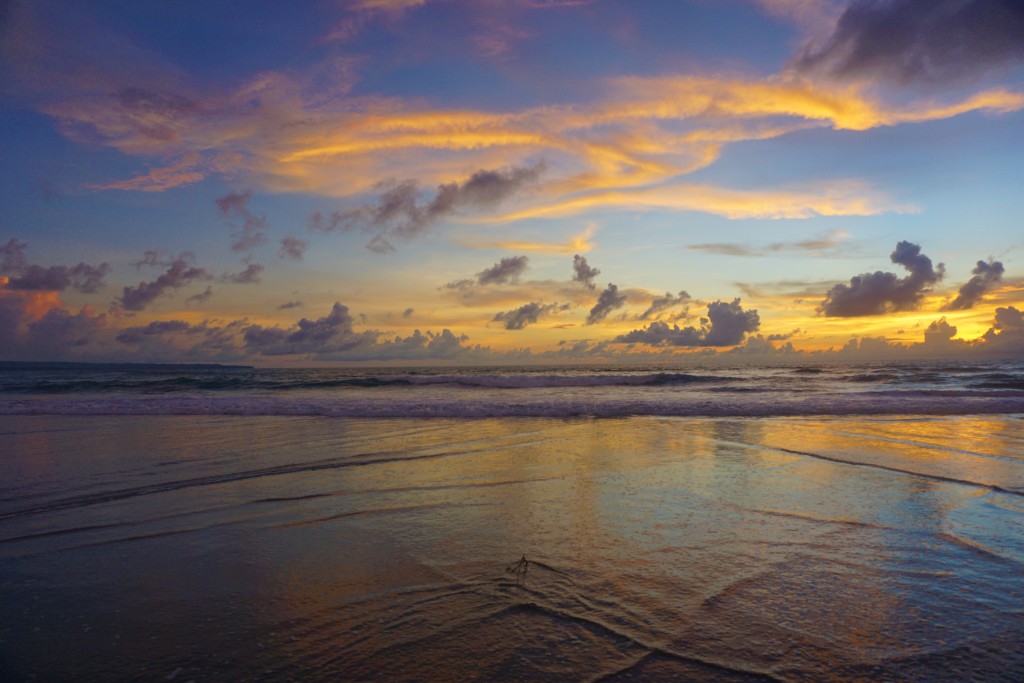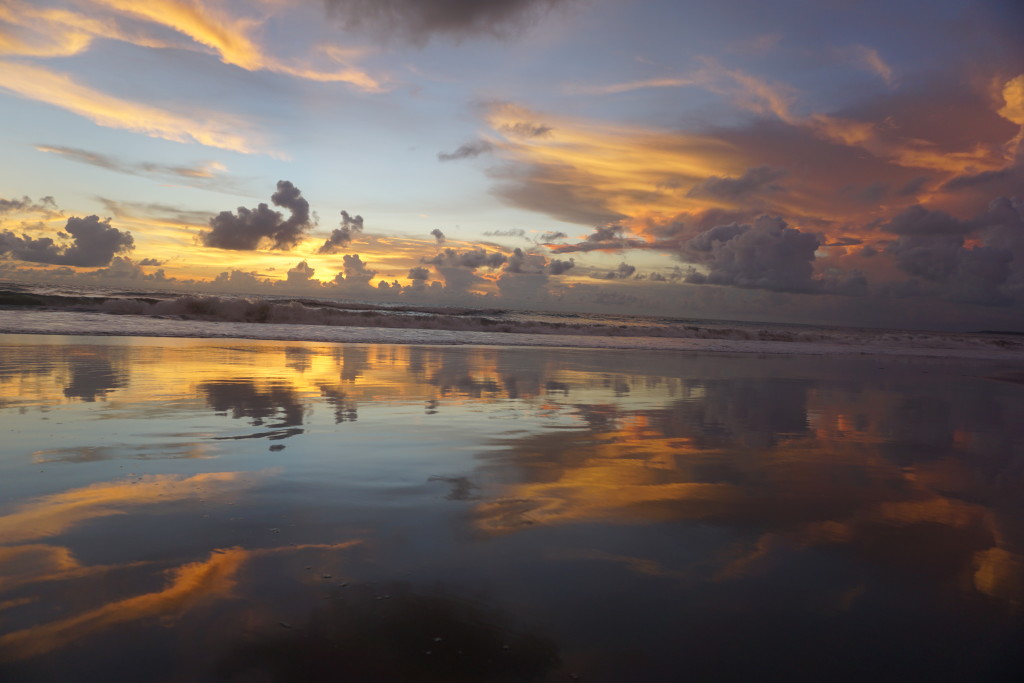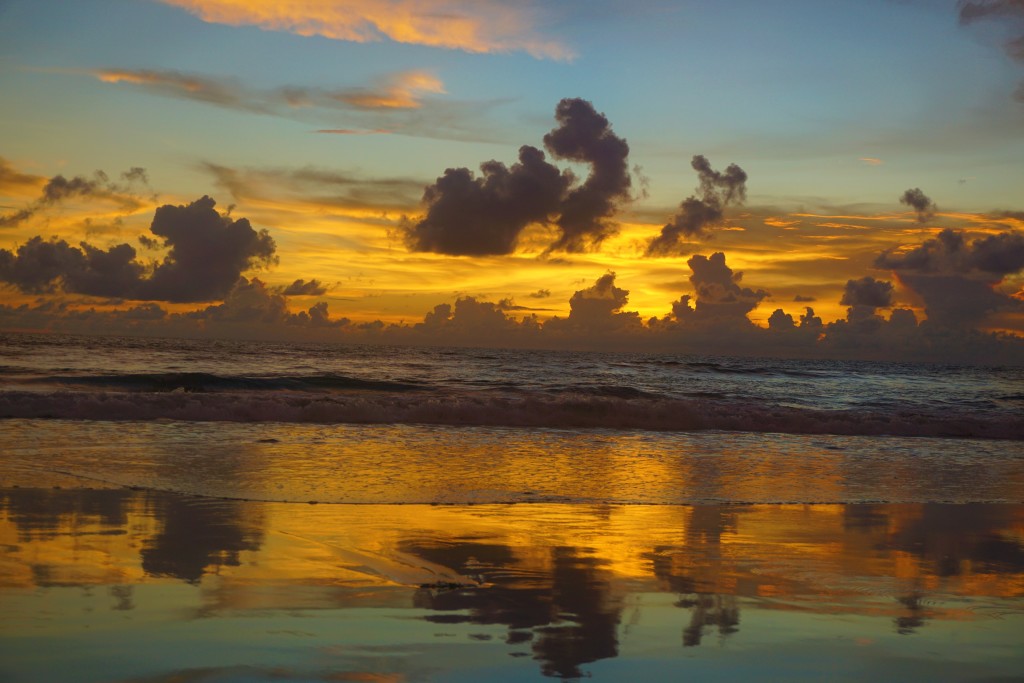Day 262, Bali, Indonesia
Bali is called the island of Hindu temples. With over 6000 temples on the island, that title is well earned. Even walking a short distance in our neighborhood, we pass 3-4 in two blocks.
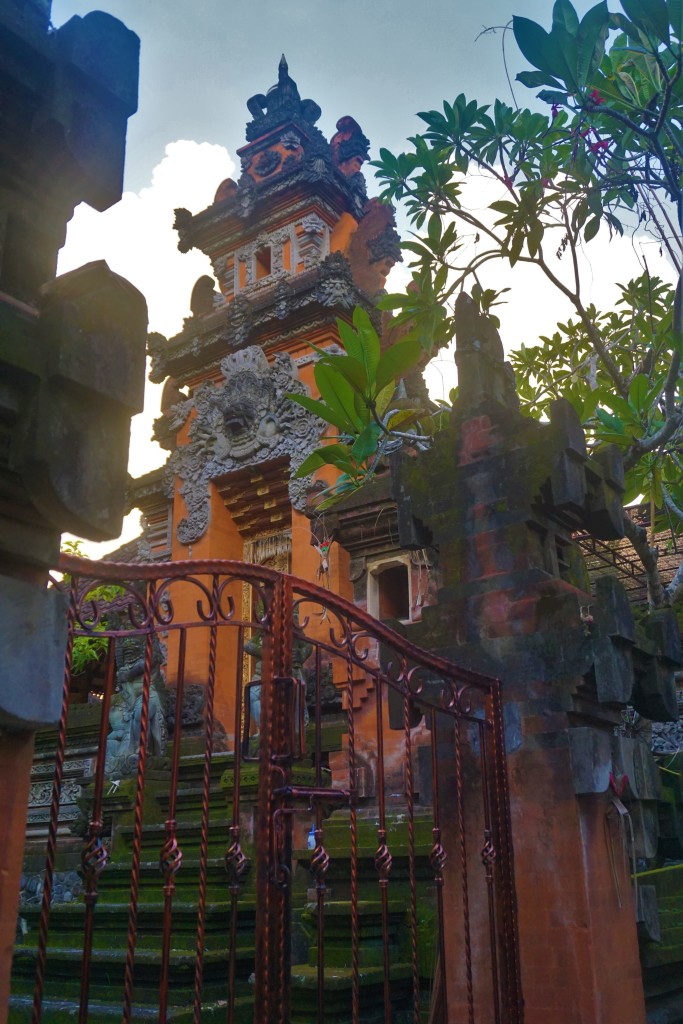

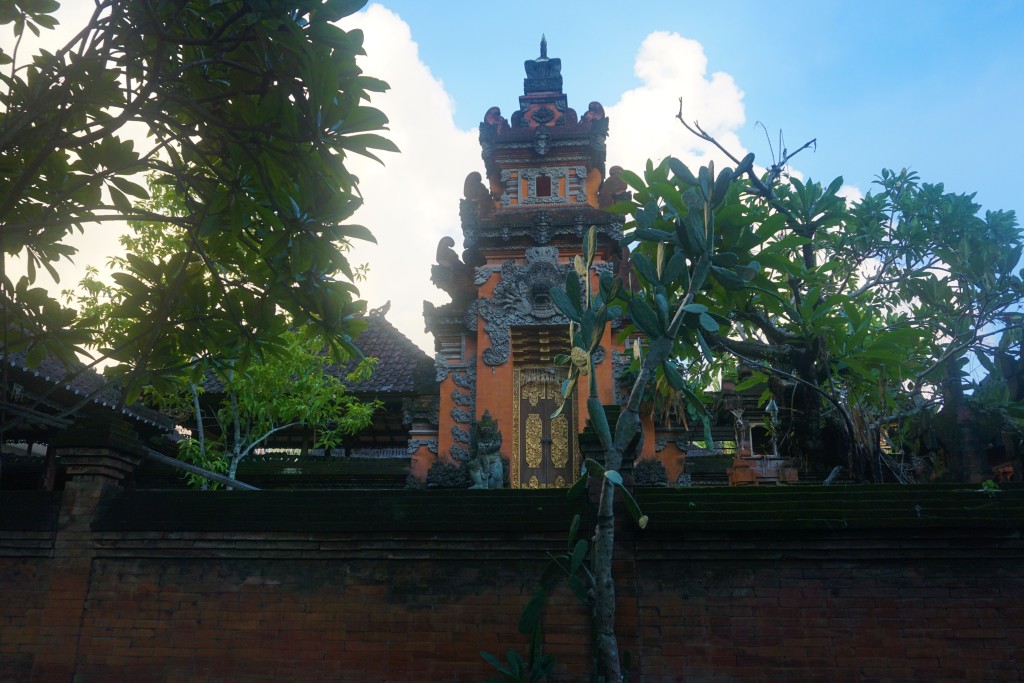
Our shuttle driver from the airport explained how Indonesia is predominantly Islamic, but the island of Bali is 80-90% Balinese Hindu. The first clue of this is driving through the streets and seeing these large curved offerings outside of temples and stores.
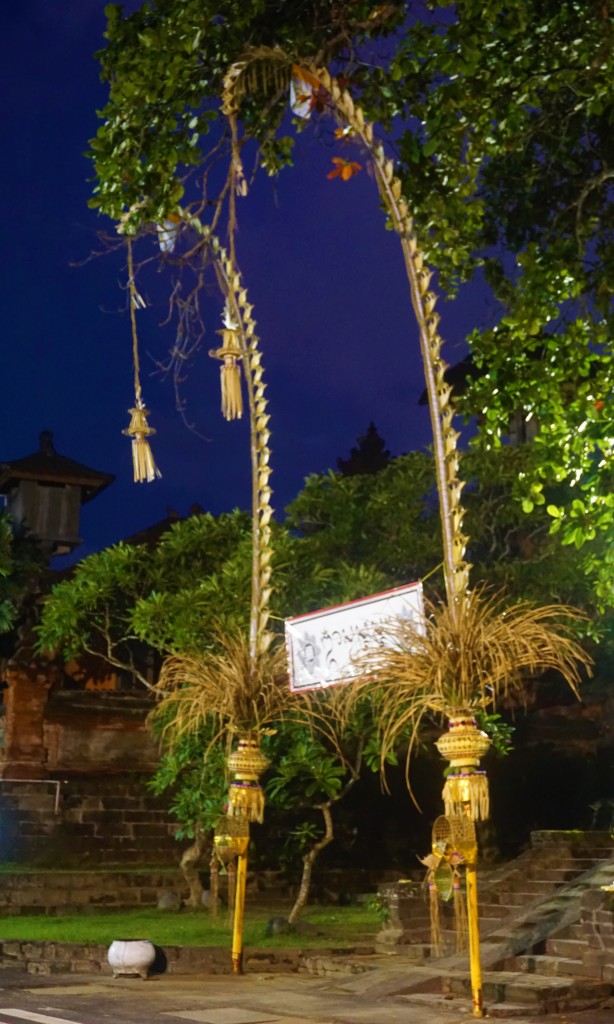
The first day we were in Bali I noticed the small palm tree trays filled with flowers and rice. Some had a cigarette in them, others crackers, cookies and coins. I walked into a clothing store and the young girls were busy at the counter assembling these trays. They set them out directly on the busy sidewalk as their offering site.
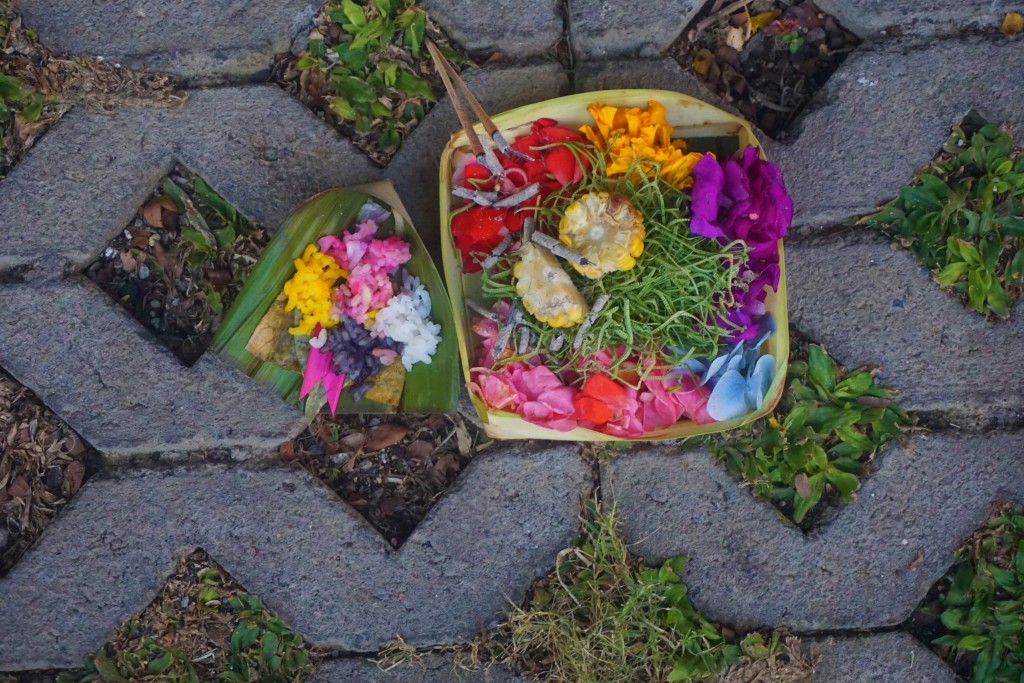
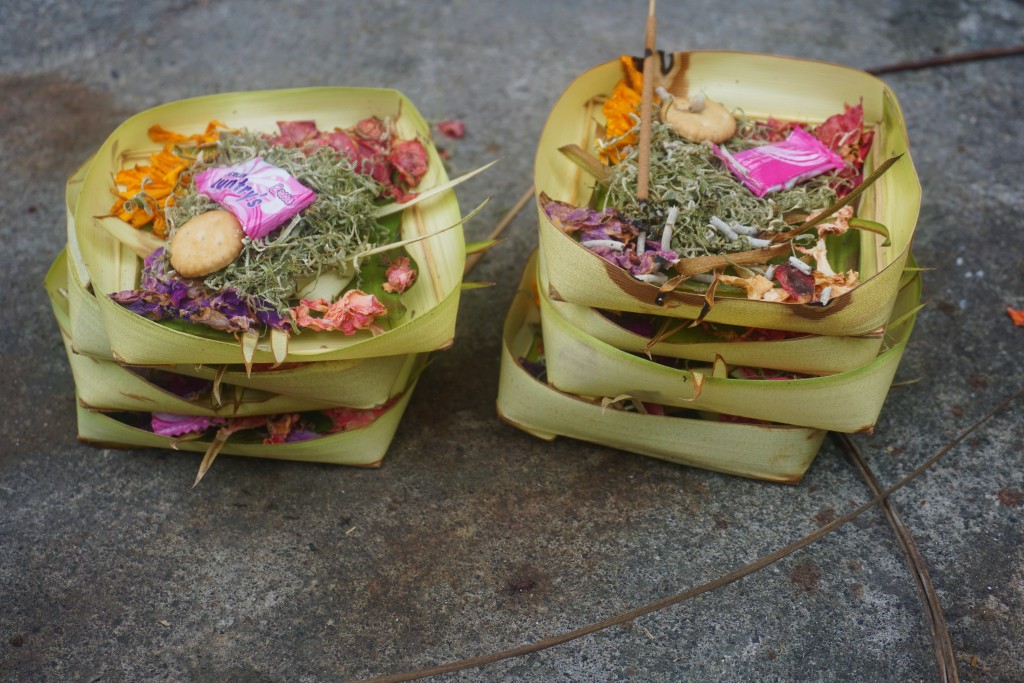
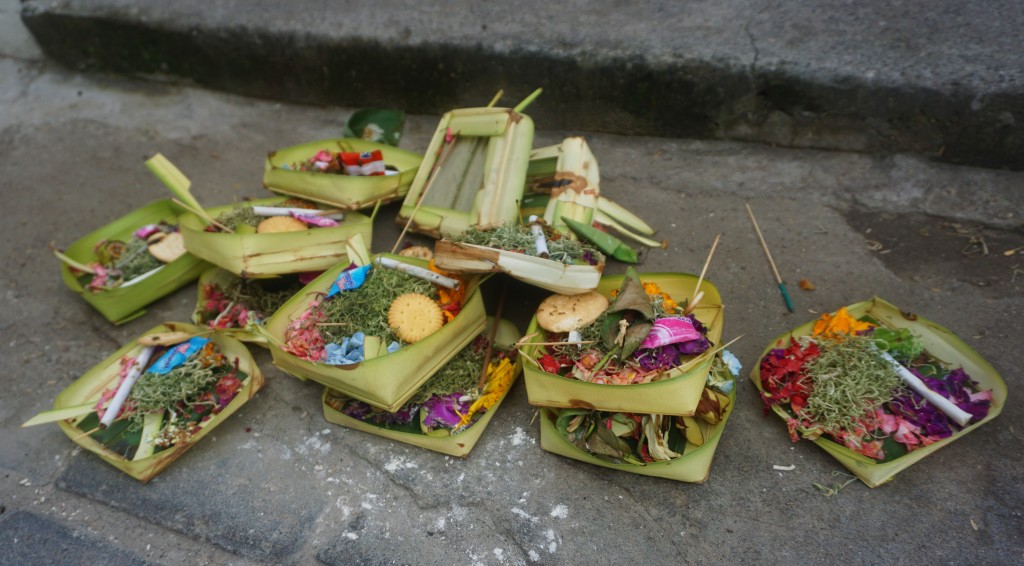
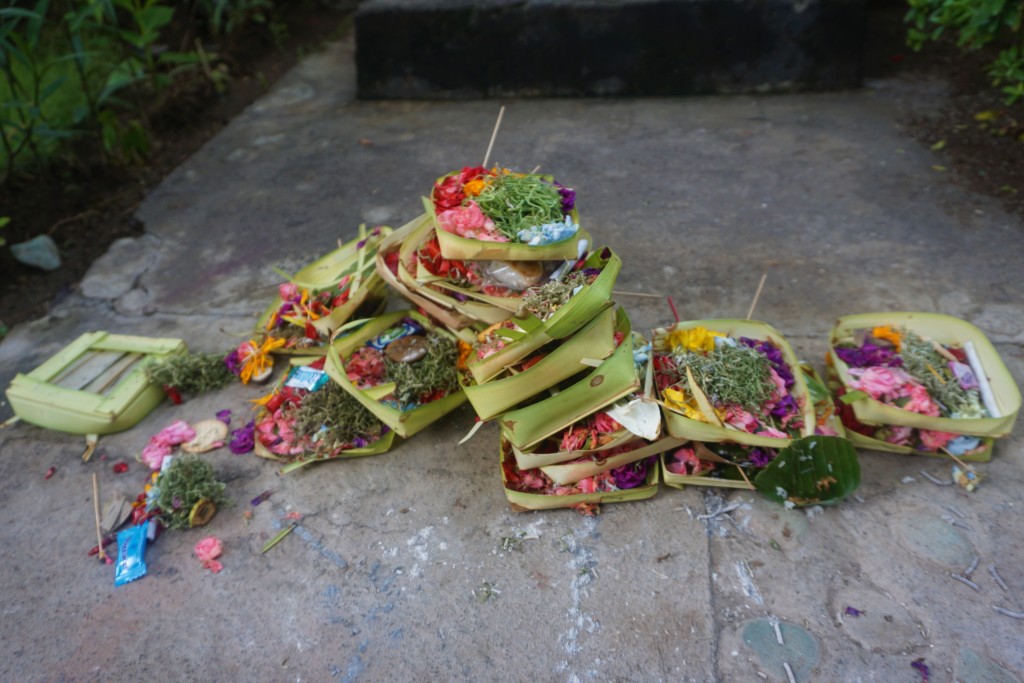
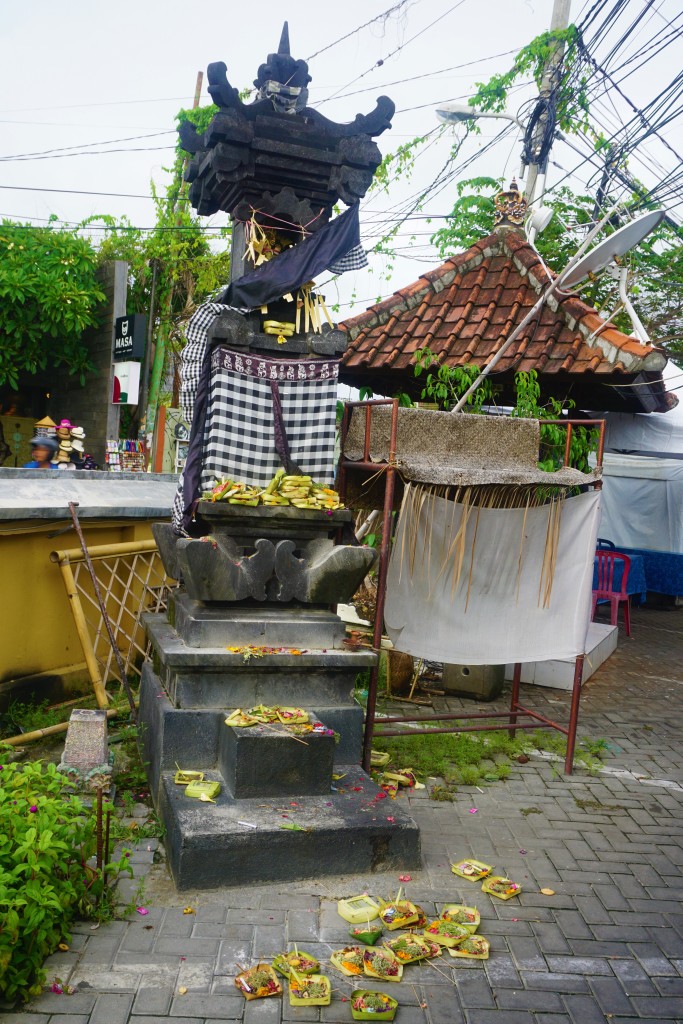
In Balinese, offerings or gifts are called banten, derived from the Sanskrit words bali meaning tribute or obligation, and enten, meaning to be conscious. Daily offerings are called canang sari, taken from the Balinese words for essence, and the word for ‘small container made of palm leaves’.
Offerings are gifts. They are a means of giving something back. But, of course, gifts obligate the recipient and so the system creates mutual obligations and favors, even between humans and spirits. With offerings to the demons, however, the offeror does not expect a gift in return, just the favor that the demons will go away.
The phrase canang sari is derived from the Balinese words sari (essence) and canang (a small palm-leaf basket as the tray). Canang sari is a daily offering to Sang Hyang Widhi Wasa both as an act of gratefulness but also an hope of being treated with good favor. The time and effort made to prepare these offerings is a disciplined devotional practice of their faith. It’s a way of starting their day connecting with their faith, expressing gratitude, asking that favor will be shown toward them, that demons will be turned away, and that they remain conscious of their gods throughout the day every time they look at it.
The Canang sari are complicated little offerings, don’t be deceived by their tiny size. There are four main parts and layers, peporasan, ceper, raka-rake, and sampian urasari. Each layer has its specific natural material requirements, with the exception of the coins. Perhaps the most complicated is the top layer, which is made up of overturned flowers in four different colors (white, red, yellow, blue or green) facing specific directions, Tswara (east), Brahma (south), Mahadeva (west), Vishnu (north).
The statues placed everywhere are also significant. Here is the one at the entrance of our villa.
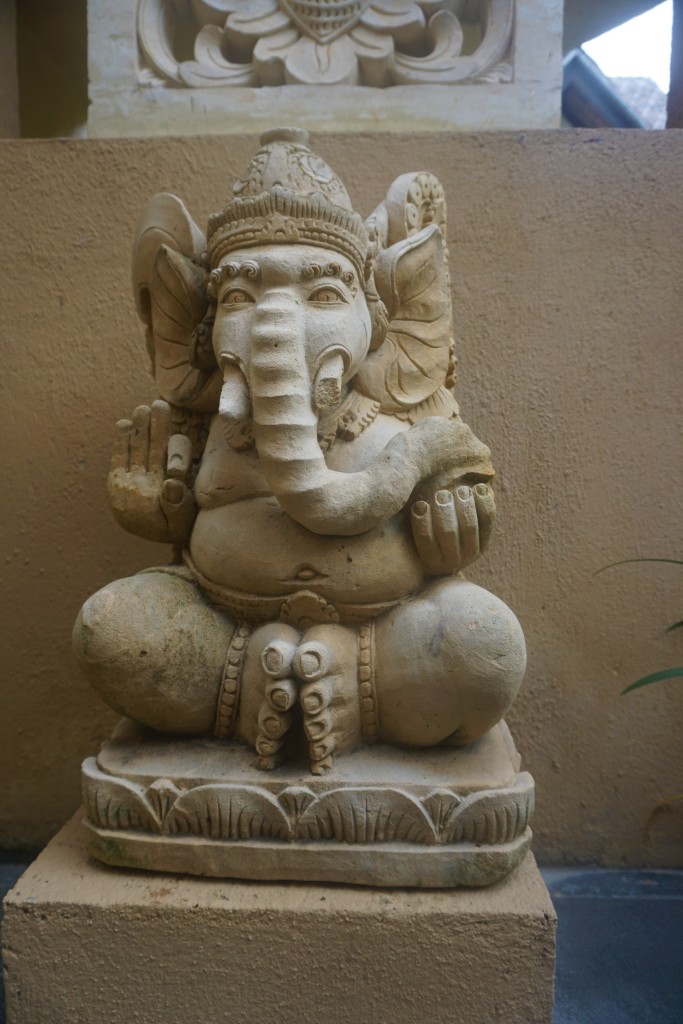
Here is one from in front of a temple.
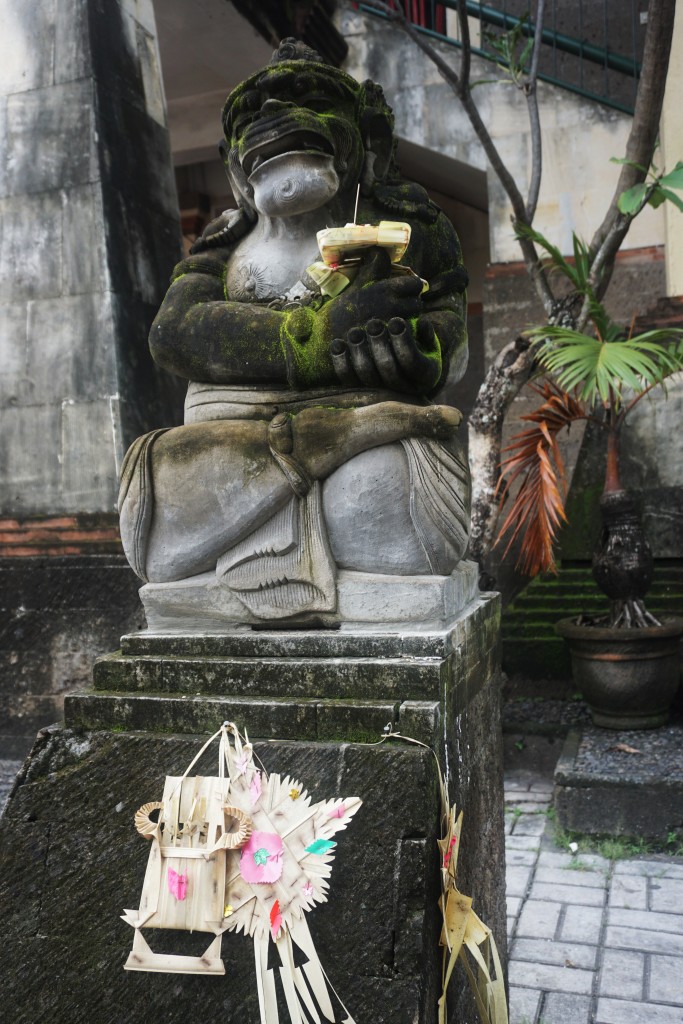
In addition to these daily offerings, you will see offerings placed on the many statues in the streets, stores, and residences. There are also smaller shrines everywhere, most homes seem to have them, or even parking lots.
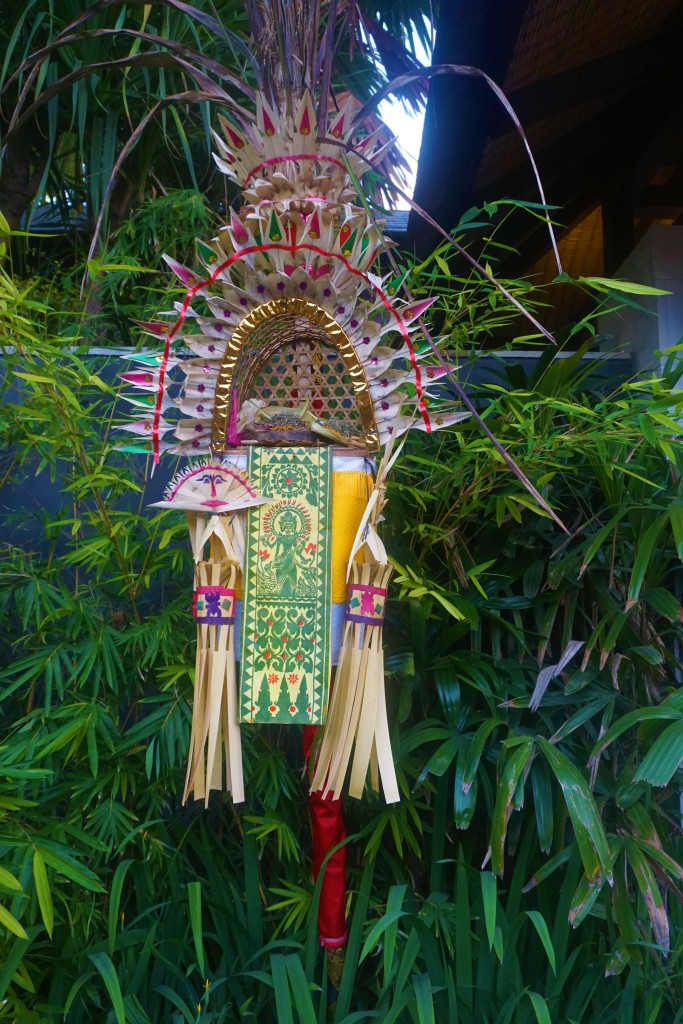
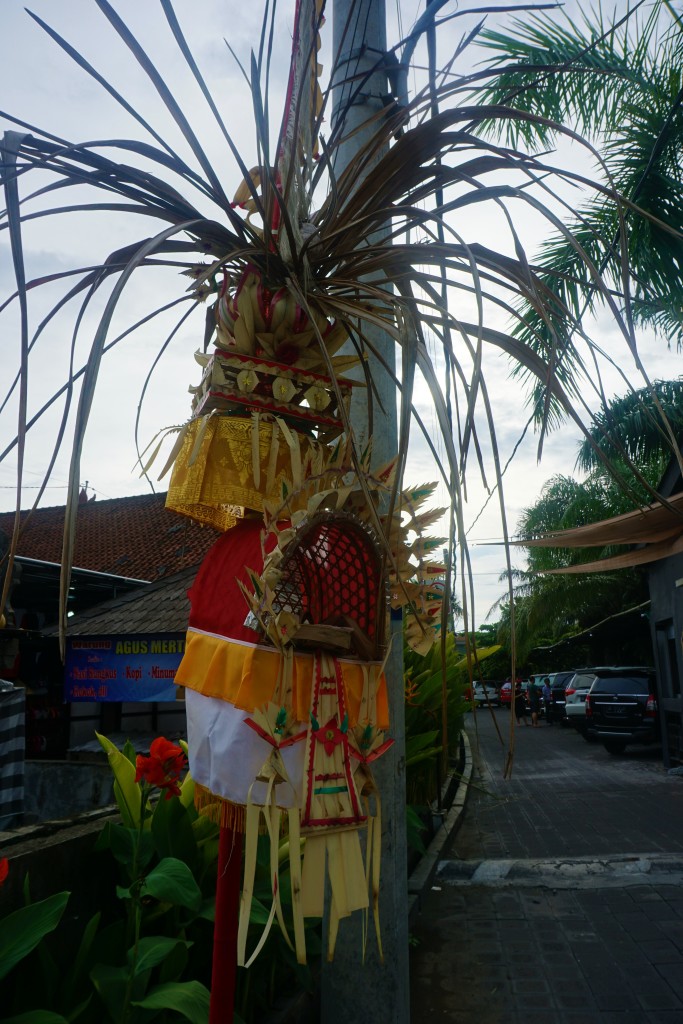 This one has parasols.
This one has parasols.
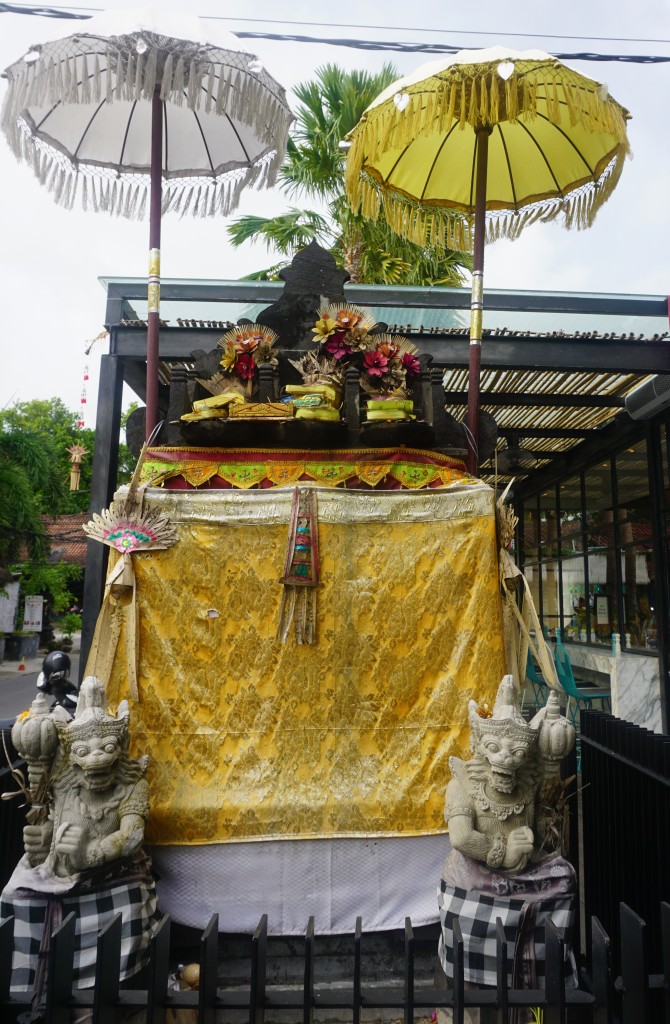
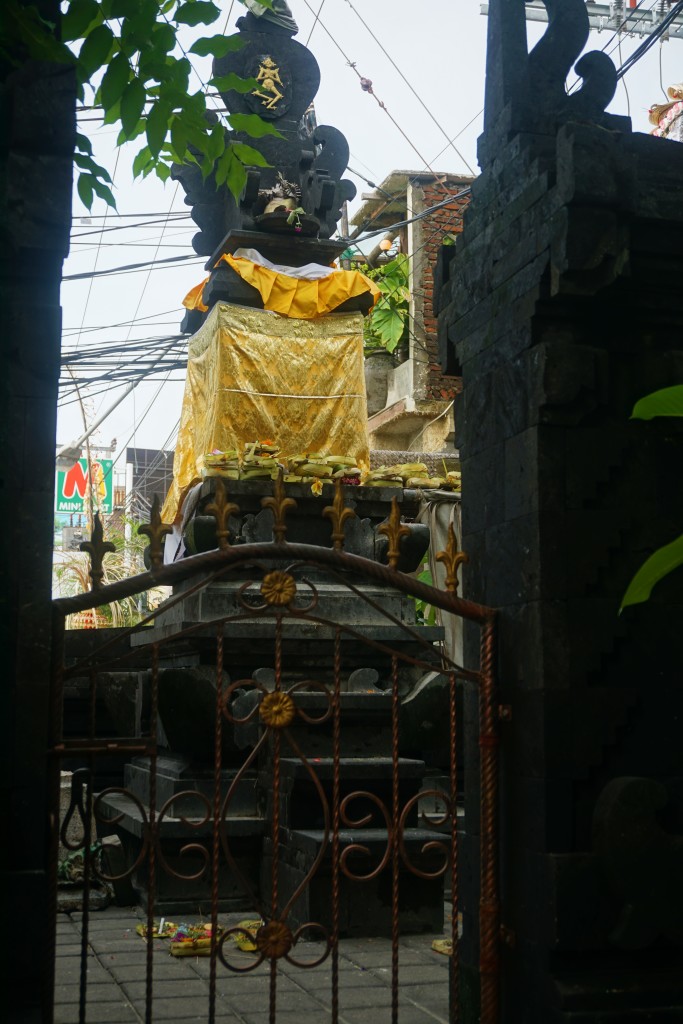

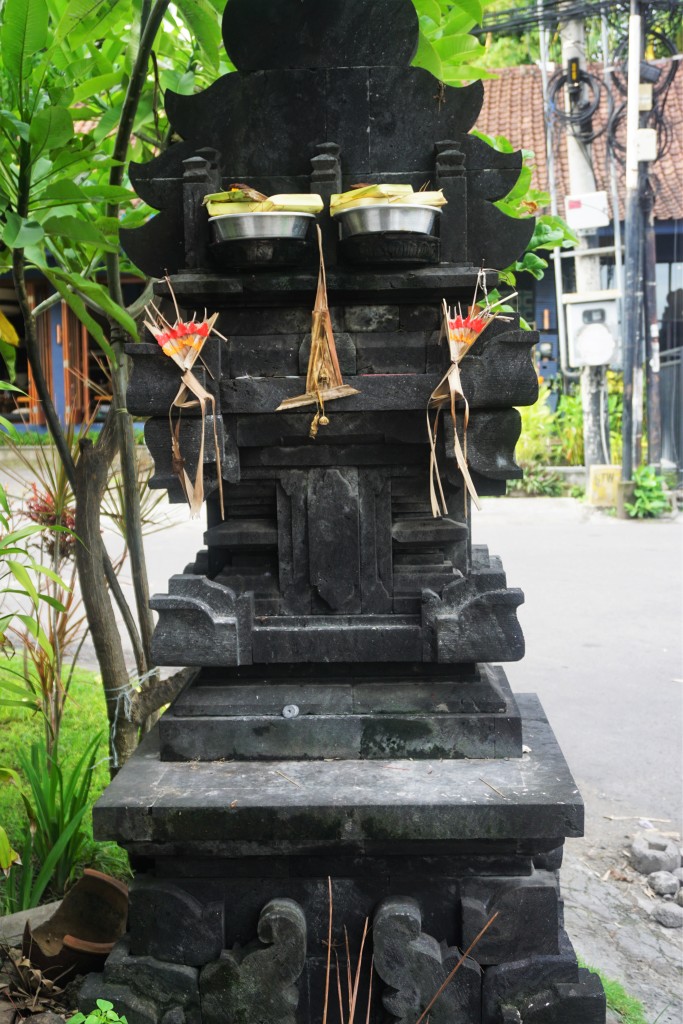
Here are some of the shops and restaurants we saw as we walked to and from the beach.
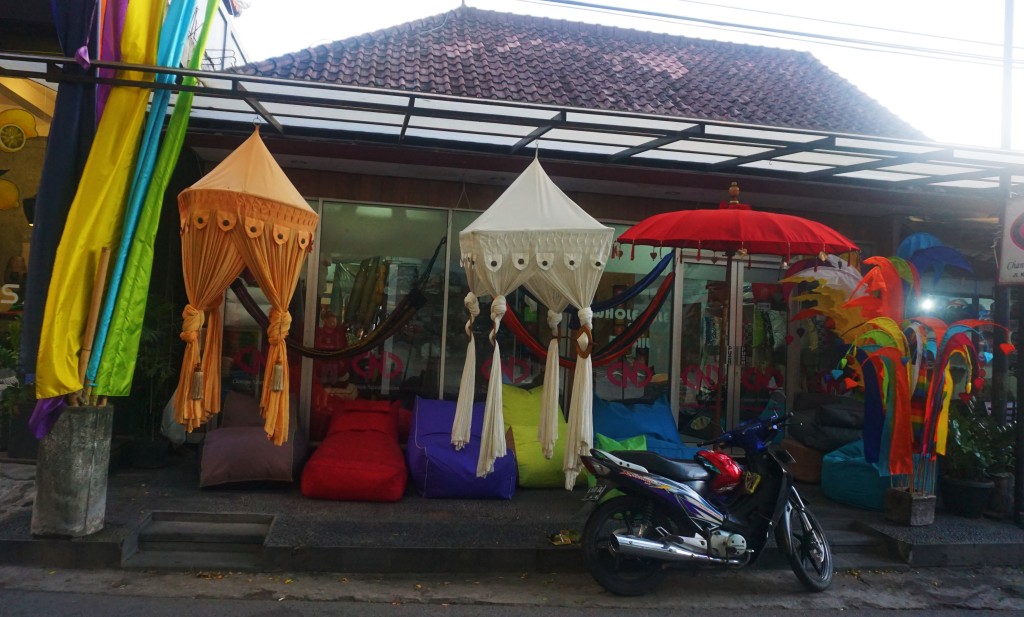
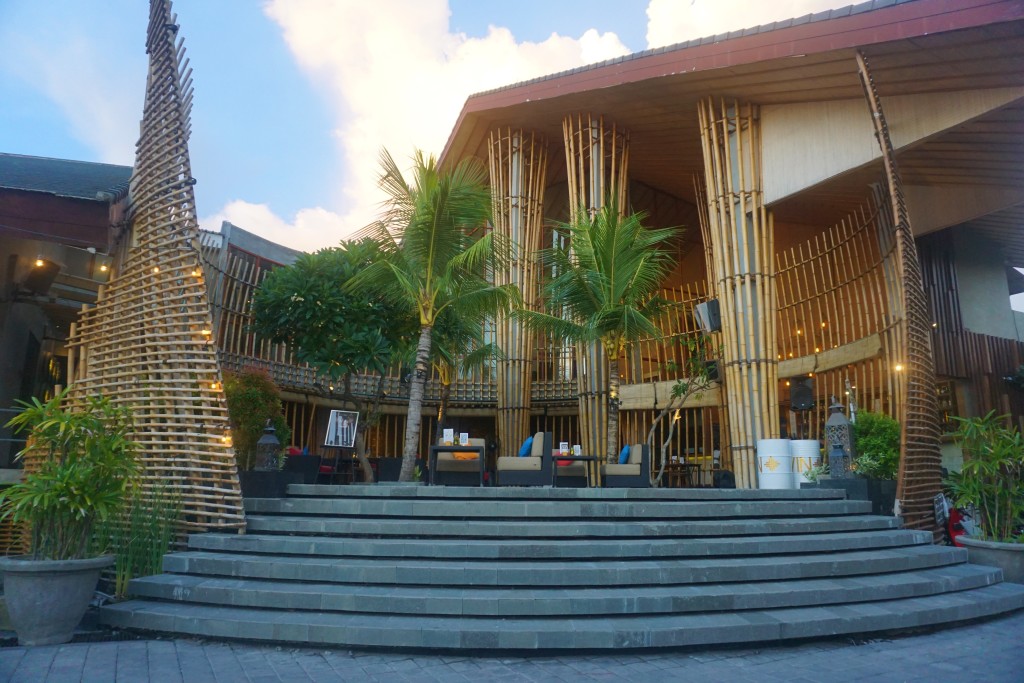
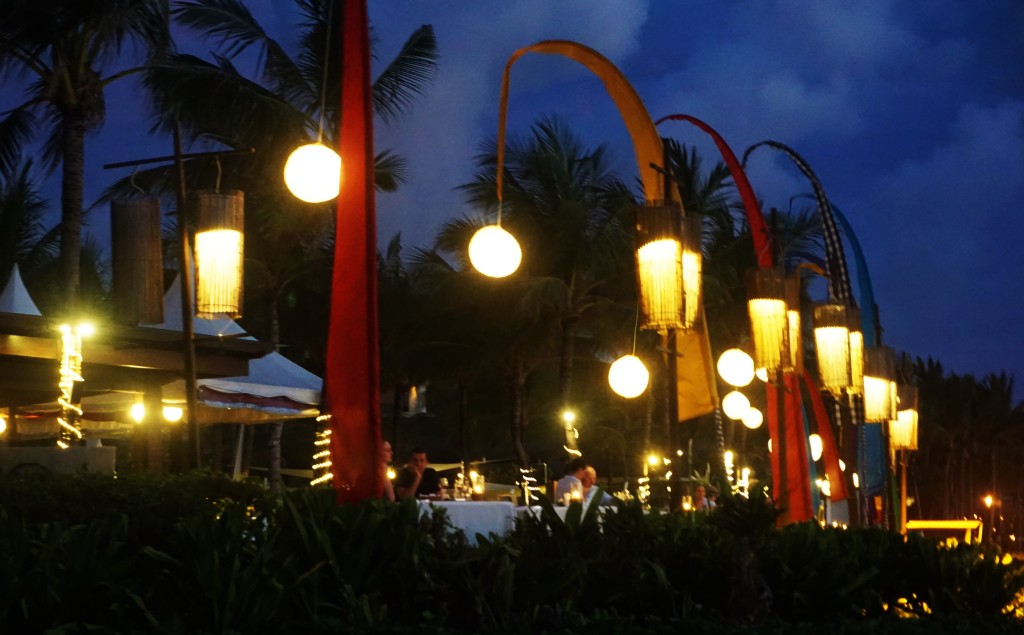
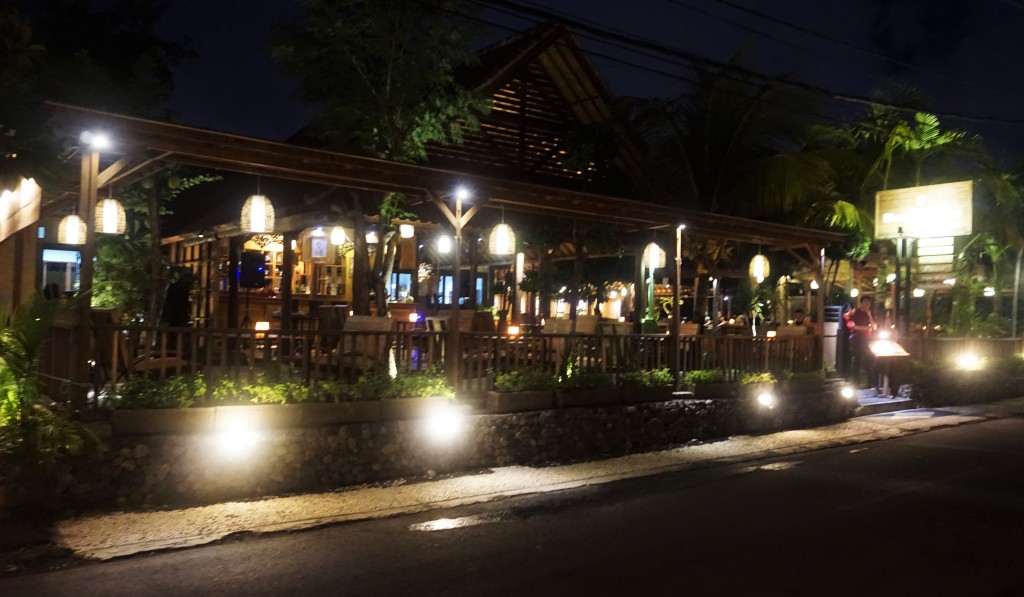
That evening we went to Petitenget Beach to witness one of the most spectacular sunsets I’ve ever seen. Here was the dramatic progression from yellow to a burnt orange.
